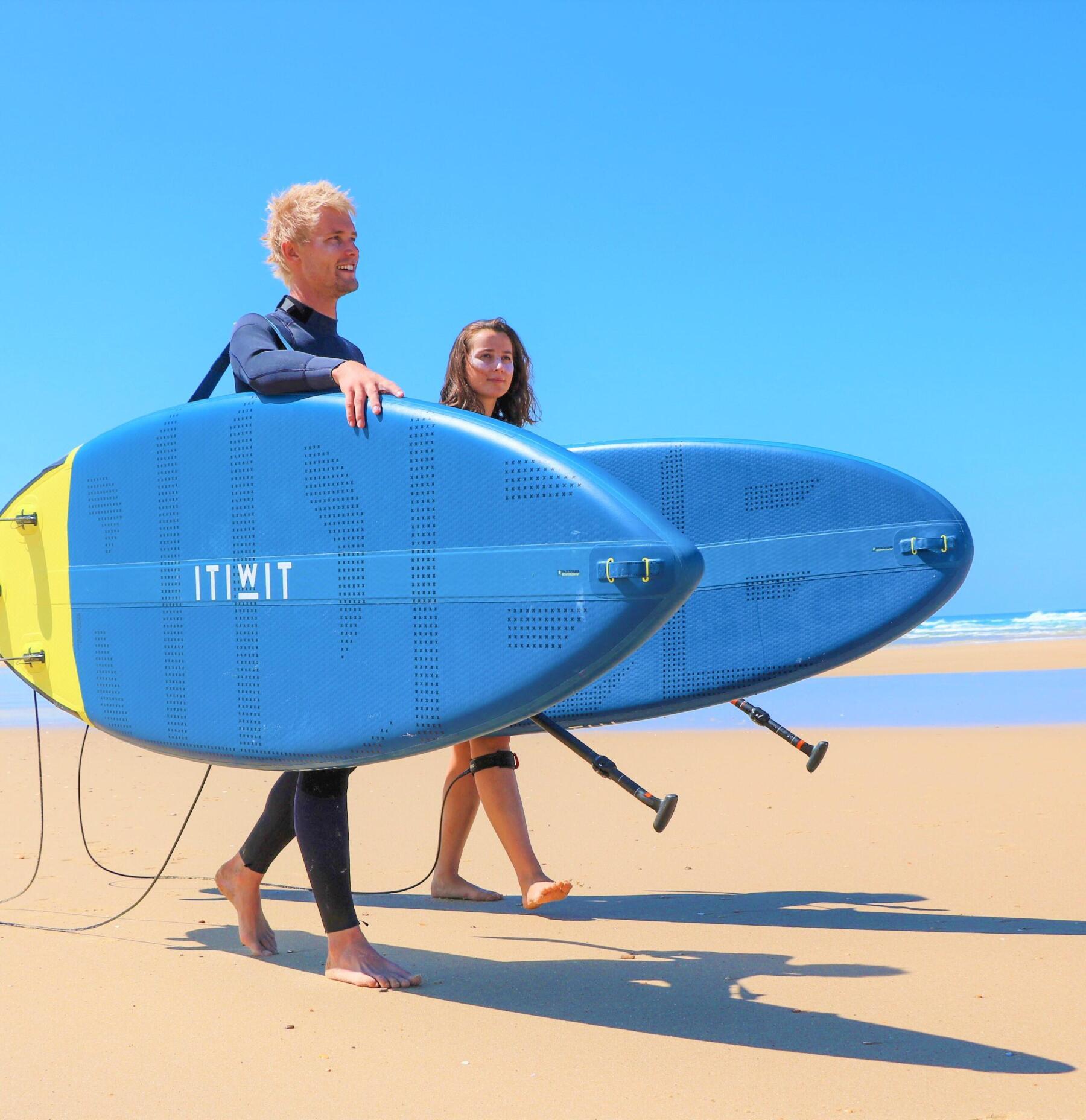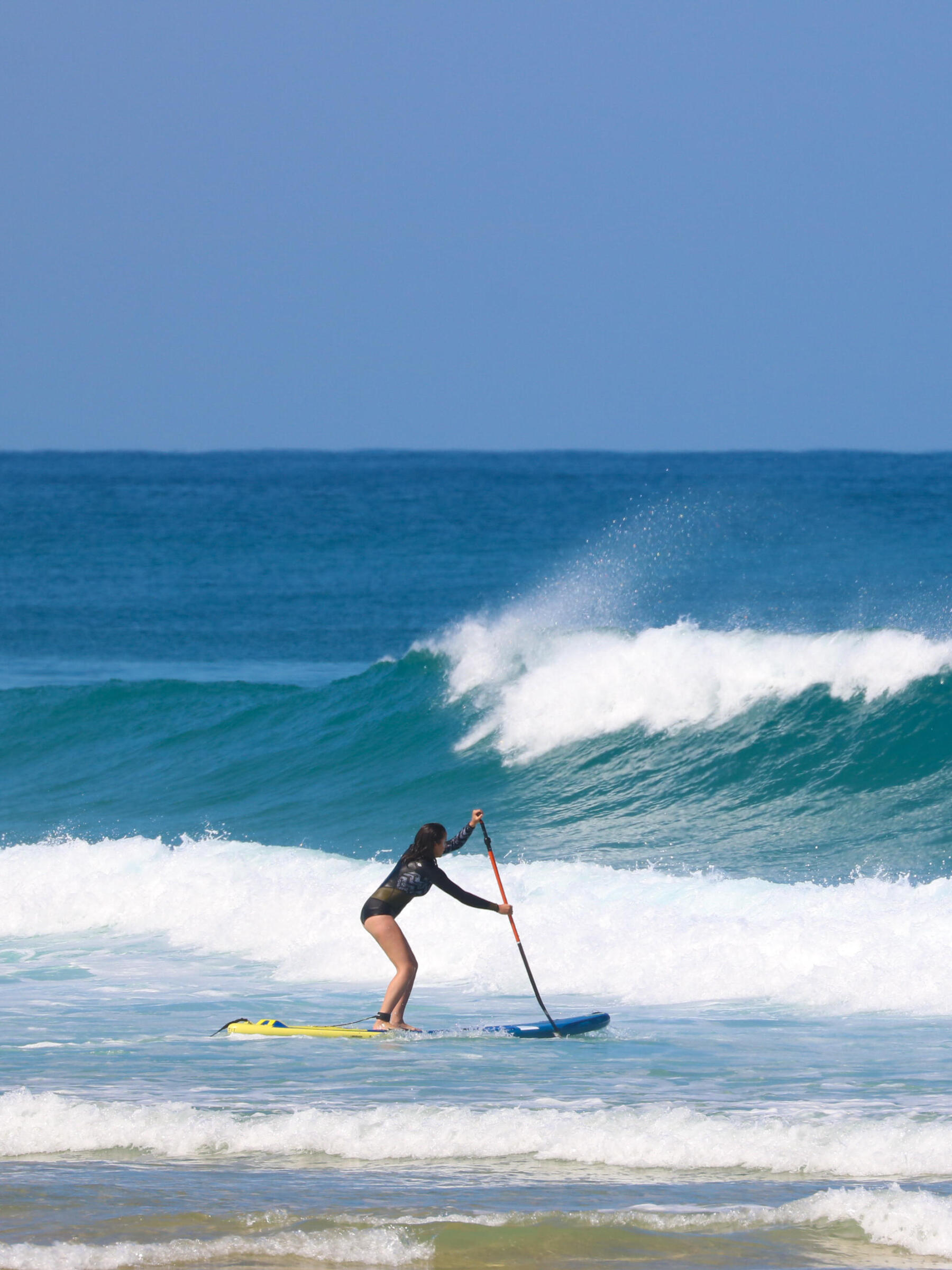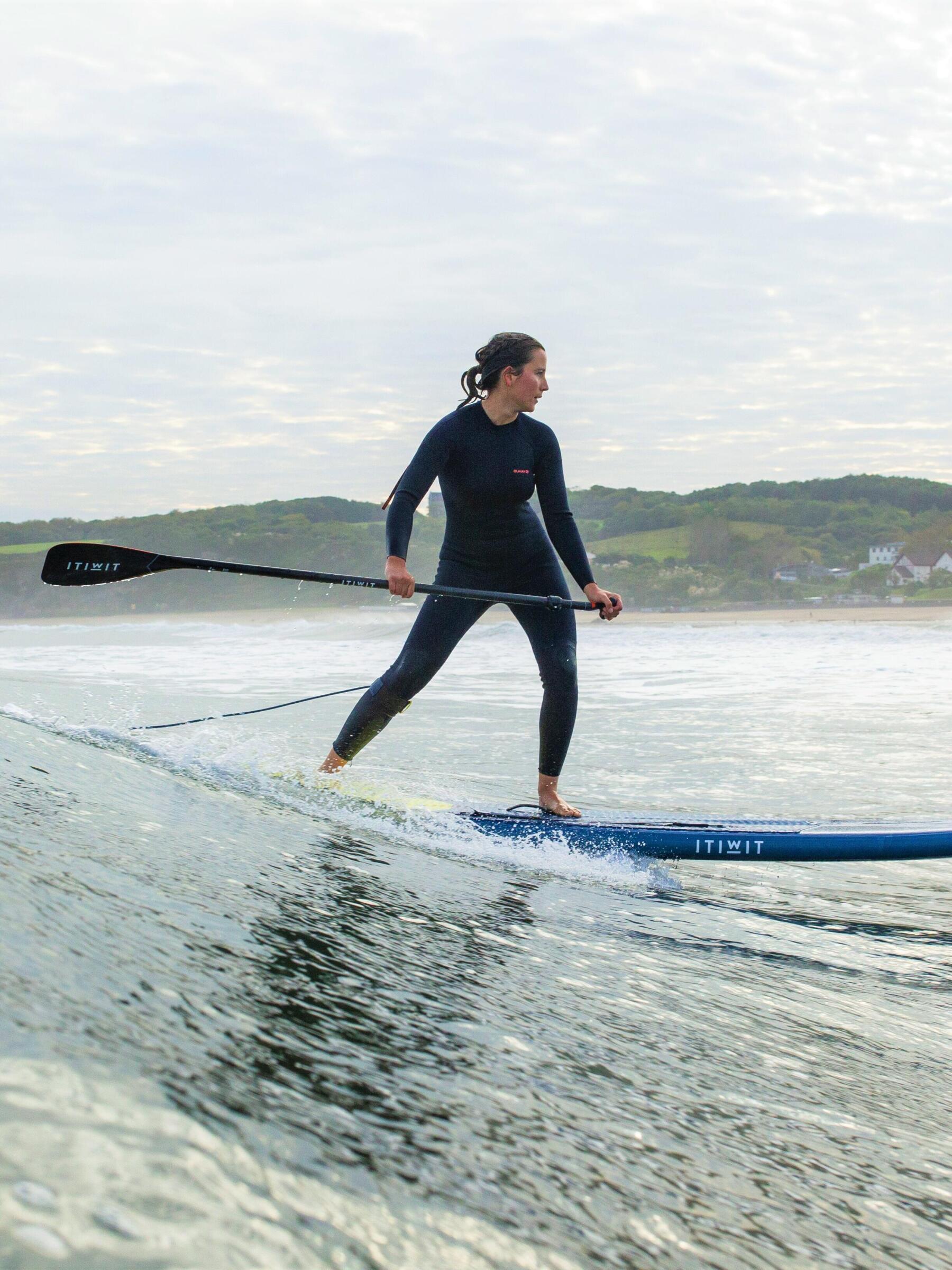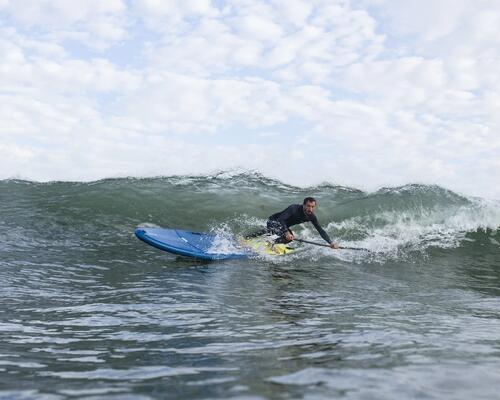What type of equipment is best for stand-up paddle surfers
Stand-up paddlers often ride their first small wave with a beginner or occasional touring board. But if you are ready to start making some moves on the wave, from one side to the other, with small turns, you will need a real stand up paddle board. These boards look a lot like classic surfboards, although bigger to support your weight when at a standstill. They are short and wide for easy turning, with a pronounced rocker (banana) in the front to prevent ploughing into the wave, with sharp rails at the back like ski edges to hang well in the wave.
If you want to surf safely, choose an inflatable stand up paddle surf board. These boards provide good surfing thanks to their rigidity and semi-rigid rails at the back that hang well into the wave. If you happen to fall on the board or smack into it, the flexibility of the inflatable board prevents injury to yourself or another surfer. And once folded up, it fits easily into the trunk of your car.
As for the paddle, you can simply use the one you already have. It is a good idea in supsurf to reduce the length of the paddle from 0 to +10cm of your height compared to touring so it does not interfere when making moves but you can still use it for support when changing direction. It must be strong enough to handle the intense paddling when taking a wave.








